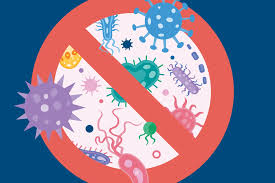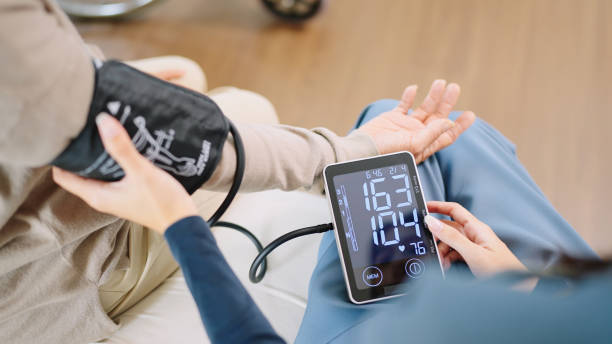By Steven O. Mukoro
A new study from Rutgers Health uncovers an unexpected twist in the fight against antibiotic resistance: instead of simply killing bacteria, antibiotics like ciprofloxacin can push microbes into a survival mode. The drug disrupts energy production in Escherichia coli (E. coli), triggering a surge in metabolic activity that not only helps some bacteria survive the attack but also accelerates their mutation rate—ultimately speeding up the evolution of resistance.
Rather than wiping out bacteria entirely, some antibiotics may inadvertently train them to fight back. This energy crash and metabolic rebound allow E. coli cells to endure treatment and adapt more quickly, undermining the long-term effectiveness of the drug.
Ciprofloxacin, commonly used to treat urinary tract infections, is now shown to spark a microbial stress response that could be fueling the global rise in antibiotic resistance.
“Antibiotics can actually change bacterial metabolism,” said Barry Li, a student at Rutgers New Jersey Medical School pursuing a dual doctoral degree for physician-scientists and the first author of the paper published in Nature Communications. “We wanted to see what those changes do to the bugs’ chances of survival.”
Li and senior author Jason Yang centered their research on adenosine triphosphate (ATP)—the vital molecule that fuels cellular activity. When ATP levels drop, cells enter a state known as “bioenergetic stress.” To replicate this condition, the team genetically modified E. coli to continuously burn through ATP or its metabolic counterpart, nicotinamide adenine dinucleotide (NADH). They then exposed both the engineered bacteria and unaltered strains to ciprofloxacin.
What they found was unexpected. Both the drug and the genetic modifications depleted ATP, but instead of slowing down, the bacteria ramped up their activity. Their respiration rates spiked, and they began producing excessive reactive oxygen species—damaging molecules that can wreak havoc on DNA. This metabolic overdrive led to two alarming results.
First, more bacteria survived. In time-kill experiments, ten times as many energy-stressed cells withstood a lethal dose of ciprofloxacin compared to normal cells. These survivors, known as “persister cells,” remain dormant during treatment and reemerge afterward to reignite infection.
Contrary to the long-standing belief that persister cells arise from slowed or dormant metabolism, this study suggests that an energy crisis can actually stimulate survival and resistance.
“People expected a slower metabolism to cause less killing,” Li said. “We saw the opposite. The cells ramp up metabolism to refill their energy tanks and that turns on stress responses that slow the killing.”
Follow-up experiments revealed that the bacteria’s survival was linked to the stringent response—a cellular alarm system that reprograms bacterial activity under stress.
But the researchers uncovered a second, even more concerning effect: stressed cells mutated at a faster rate, accelerating the development of antibiotic resistance.
While persister cells allow infections to linger, genetic resistance can render antibiotics completely ineffective. To test this, the Rutgers team exposed E. coli to gradually increasing doses of ciprofloxacin. The stressed bacteria reached full resistance four treatment cycles earlier than their non-stressed counterparts.
Genetic sequencing and standard mutation assays pointed to a clear cause: oxidative stress triggered by heightened respiration damaged DNA, and the bacteria’s error-prone repair mechanisms introduced mutations—fueling rapid evolution in real time.
“The changes in metabolism are making antibiotics work less well and helping bacteria evolve resistance,” said Yang, an assistant professor at the medical school and Chancellor Scholar of microbiology, biochemistry & molecular genetics.
Preliminary data indicate that, in addition to ciprofloxacin, antibiotics like gentamicin and ampicillin also deplete cellular ATP. This stress response may extend across a wide range of pathogens, including Mycobacterium tuberculosis, which is particularly vulnerable to disruptions in ATP levels.
If confirmed, this insight sheds new light on a pressing global health issue. Antibiotic resistance already contributes to approximately 1.27 million deaths each year. By overlooking the metabolic consequences of treatment, current strategies may be missing a crucial opportunity to curb resistance.
The findings point to several important shifts in how antibiotics should be developed and used:
1. Screen for metabolic side effects: Candidate antibiotics should be evaluated for unintended ATP-draining effects.
2. Use anti-evolution adjuvants: Existing drugs could be paired with compounds that block bacterial stress responses or neutralize reactive oxygen species.
3. Rethink high-dose strategies: Both earlier research and the latest data suggest that using maximum antibiotic concentrations may backfire—inducing stress responses that actually help bacteria survive and adapt.
“Bacteria turn our attack into a training camp,” Yang said. “If we can cut the power to that camp, we can keep our antibiotics working longer.”
Li and Yang plan to test compounds that relieve bioenergetic stress, aiming to transform the microbes’ energy crisis from a protective shield back into a vulnerability.





